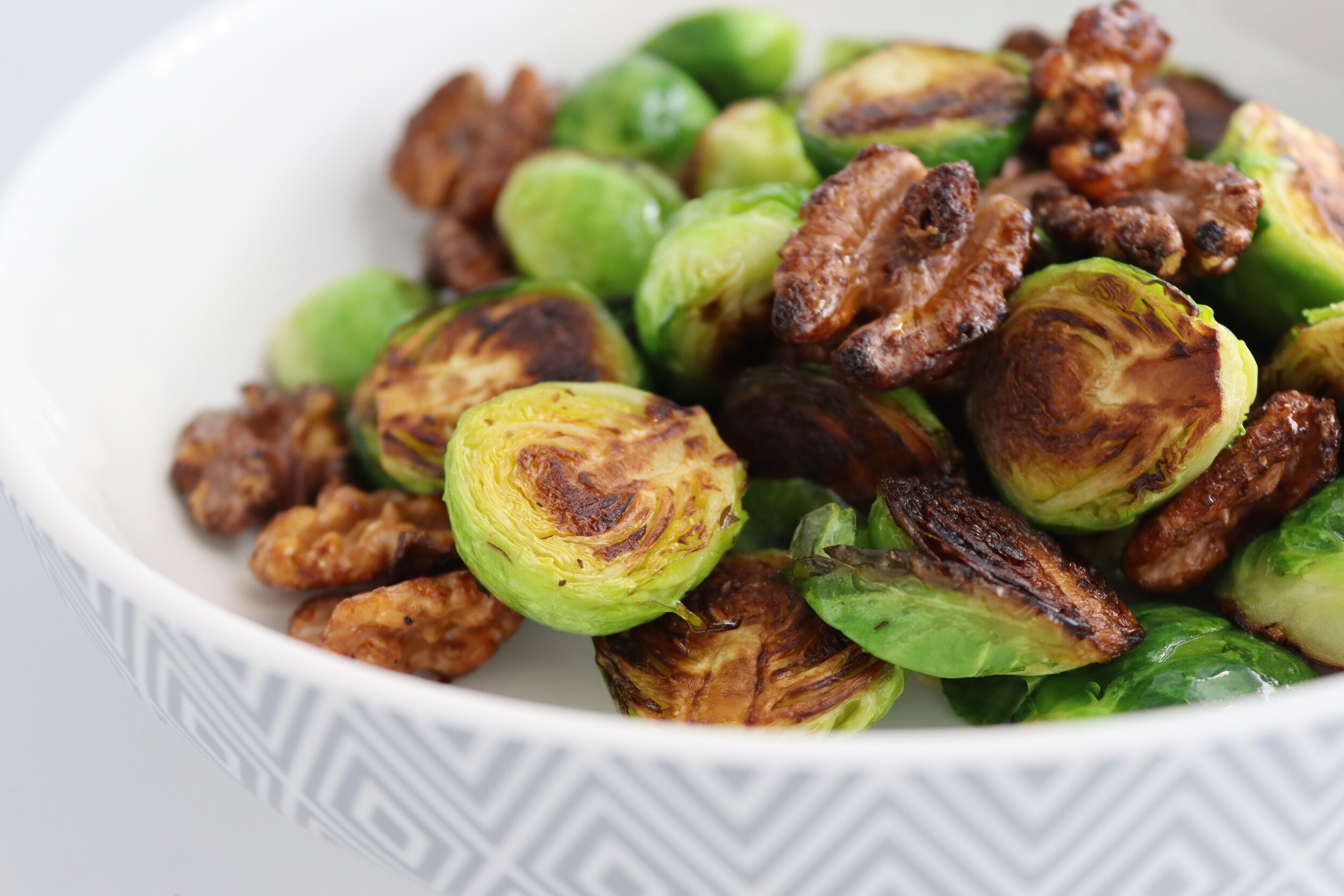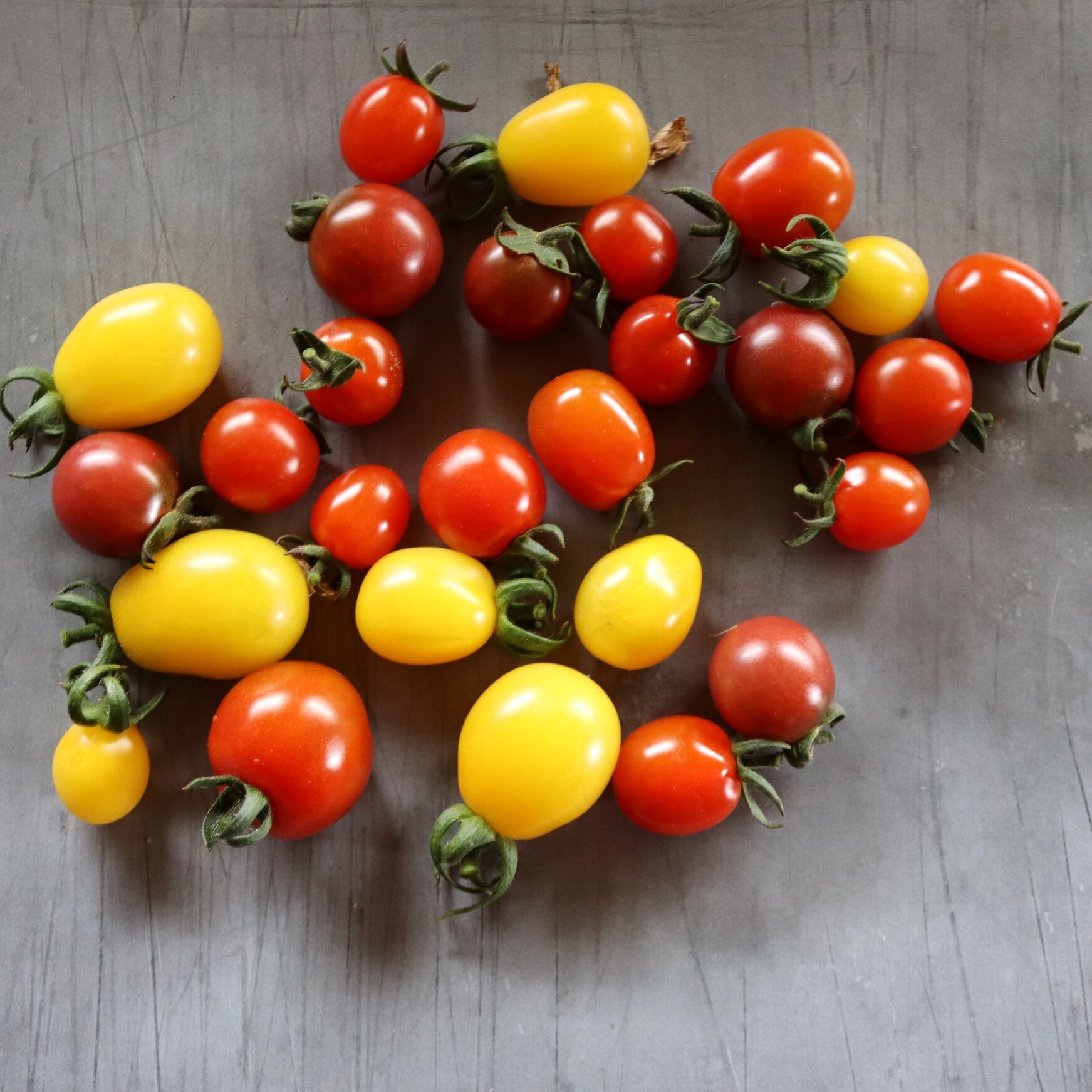It’s beginning to feel a lot like Christmas… sort of!! There’s no doubt Christmas 2020 will be a very different celebration to what many of us are used to. However, we’re determined to make sure that, despite the changes, Christmas day will be as delicious as ever! While the turkey might still reign supreme as your traditional Christmas showstopper, we’re here to prove that these vegetable sides are just as worthy to take center stage this festive period… and don’t forget the roast potatoes!!!
Celeriac, Rosemary and Leek Gratin
Creamy, herby and full of that delicious celeriac flavour, this is definitely one of our favourites! Whats more, this recipe can be prepared ahead of time and baked on the day!
Ingredients
25g butter
2 leeks, finely sliced
1 sprig rosemary leaves, roughly chopped
1 bay leaf
300ml double cream
300ml milk
500g celeriac peeled, quartered and thinly sliced
Method
Melt the butter in a saucepan and add the sliced leeks, chopped rosemary and bay leaf. Sweat slowly for twenty minutes until well softened.
Add the milk and cream and bring to a gentle simmer. Season to taste with salt. Remove from the heat and let cool a little. Discard the bay leaf.
Pour some of the cream and leek mixture into the bottom of an ovenproof dish. Arrange some of the sliced celeriac on top, spoon more of the cream mixture and continue until all your celeriac and cream mix is used up. Either place in the fridge for up to 24hrs or bake straight away.
Bake in an oven preheated to 180C for 1 hour. It should have a nice golden colour on top and the celeriac should be cooked through. If, during cooking, the gratin is browning too much cover the dish with tin foil.
Some variations
Add 100g gruyere or cheddar to the top of the gratin before baking for an extra rich side.
If serving alongside roast beef, stir 1 heaped tablespoon of horseradish sauce into the cream mixture before layering
Instead of leeks and rosemary try using a few finely sliced red chillis for an extra kick.
Ideas for leftovers
Lightly toasted sourdough topped with leftover celeriac gratin, a sprinkle of cheese and placed under the grill until golden and bubbling makes the ultimate cheese on toast!!!
Cracked black pepper carrots
A simple glazed carrots recipe with a few fiery twists of black pepper.
Ingredients
400g carrots, washed, peeled and cut into 2cm pieces
40g unsalted butter
Pinch salt
Pinch caster sugar
Freshly ground black pepper
Method
Place carrots, butter, salt and sugar into a saucepan and add enough water to just cover the carrots
Place pan on the heat and cover (we use a circle of baking paper)
Bring to a boil and cook for 5-6 minutes until the carrots are just cooked,
Remove the carrots from liquid and set aside
Place the liquid back on the heat and bring to a boil again, reducing to a light glazing consistency
Return the carrots to the pan and generously season with the black pepper
Serve warm
roasted carrots with christmas spices
Another excellent carrot recipe with some great leftover potential!
Ingredients
400g carrots
1 tbsp olive oil
1/2 tsp ground cinnamon
1/2 tsp ground nutmeg
Salt flakes
Pomegranate seeds (optional)
Method
Peel carrots and chop into equal sized batons
Line baking tray with baking paper and add carrots, drizzle with olive oil and sprinkle with spices. Generously season.
Place into oven preheated to 200C and bake for 35 minutes until well roasted.
Place into serving dish and sprinkle with pomegranate seeds if using.
Leftover ideas
Add leftover carrots to food processor alongside 1 tbsp tahini, 1 tbsp lemon juice and a drizzle of olive oil, blend until smooth for a delicious spiced carrot hummus.
Griddled Brussels sprouts with maple roasted walnuts
What could be more Christmassy than the controversial Brussels sprout? This glammed up version of the worlds most hated vegetable is sure to win around the most avid sprout avoider!
Ingredients
400g brussel sprouts
Olive oil
100g walnut halves
1tbsp maple syrup
Salt to taste
method
Trim the bottoms of the sprouts and chop in half
Lay walnuts onto a lined baking tray and drizzle with maple syrup and stir to coat, roast in an oven preheated to 180C for 10-12 minutes, shake the tray every few minutes, until nicely caramelized.
Season roasted walnuts with salt and set aside
Heat a large frying pan or griddle to smoking point with a little olive oil.
Add the halved Brussels sprouts cut side down and cook for about 4-5 minutes - the cut sides should be a nice golden brown, stir the pan and cook for another 5 minutes.
Stir through maple roasted walnuts and serve!
Some variations
If you are a meat eater, add some crispy bacon pieces to this recipe for an even more flavourful mouthful.
Not a fan of nuts? Try adding 1tsp finely chopped garlic, a sprinkle of chilli flakes and the zest of a lemon to the pan for the last 5 minutes instead. Add a squeeze of lemon juice and a drizzle of olive oil just before serving for a delicious sprout side.
Leftover ideas
Mix the leftover sprouts through some mash potato and cook over a high heat in a frying pan for a boxing day bubble and squeak!
Balsamic roasted red cabbage
Delicious red cabbage recipe with a hint of sweet and sour. Another one of our go-to roast recipes.
Ingredients
1 red cabbage cut into wedges
1tbsp balsamic vinegar
1tbsp olive oil
Fine sea salt
Method
Add vinegar, olive oil and a good seasoning of salt to a bowl alongside the cabbage wedges. Toss well to evenly coat the cabbage.
Arrange wedges in a single layer in a deep baking tray and cover tightly with foil.
Place in oven preheated to 180C for 30 minutes, flip cabbage wedges over, re-cover and roast for a further 30 minutes until the cabbage is cooked through.
Remove the foil and roast for a further ten minutes to get a nice caramelised finish.
leftover ideas
One of our all time favourite salad recipes uses red cabbage roasted in this way. Make up a this delicious buttermilk dressing by whisking together 1/2 cup buttermilk, 1/2 cup greek yoghurt, the juice and zest of one lemon, 1 clove minced garlic and 1tbsp extra virgin olive oil. Drizzle the dressing over the cabbage wedges and finish with some crumbled feta and chopped chives.
Sticky Soy and Thyme Glazed Shallots
Sweet and earthy with an umami kick. This recipe delivers big bold flavours with just a few simple ingredients. Don’t be put off by the soy sauce either.. although it may not seem a natural Christmas pairing, it really adds a deep savoury note.
Ingredients
400g shallots
1 Tbsp olive oil
1 Tbsp dark soy sauce
1 Tbsp fresh thyme leaves
Salt and Pepper
method
Preheat oven to 180C
Peel and halve the shallots. Place in a roasting dish, drizzle with olive oil, season with salt and pepper and toss to coat.
Roast for 30 minutes.
Remove from the oven and add the dark soy sauce and thyme leaves. Then return to the oven and cook for a further 20 minutes until the shallots are cooked through and nicely glazed.




























